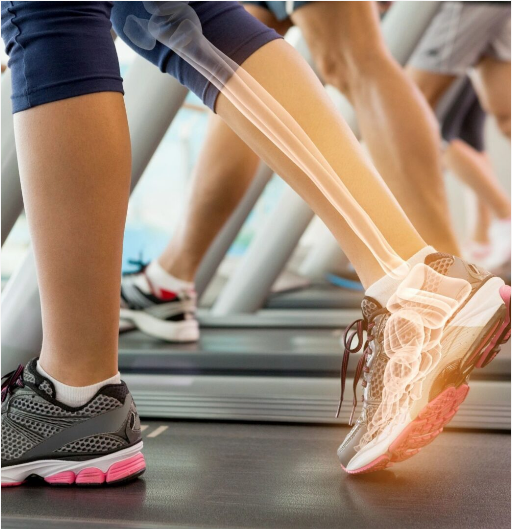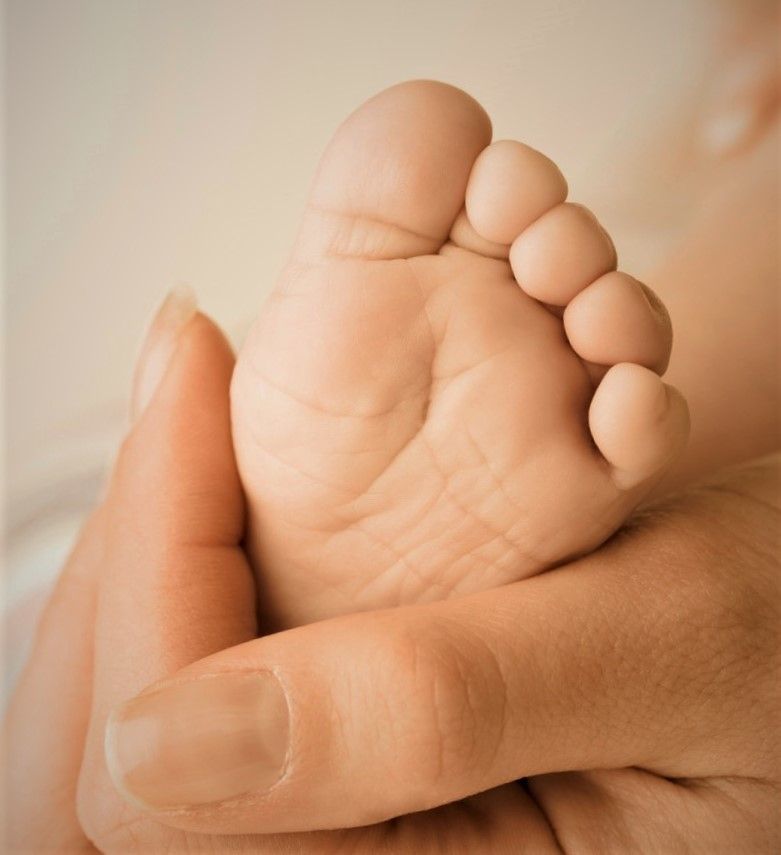Services
Expert Podiatry Services Available
in Twinsburg, Ohio
-
Ankle Sprains
An ankle sprain is a tearing or stretching of the ligaments around the ankle. This can often result from twisting or rolling the ankle. This most commonly occurs on the outside of the ankle and results in pain, swelling, and bruising.
A mild ankle sprain can be treated with Rest, Ice, Compression, and Elevation, better known as RICE therapy. However, more severe injuries which can result in instability and difficulty walking require professional care.
-
Athletes Foot
Athlete’s foot is a fungus infection of the skin of the foot. This can affect the entire foot but is most often seen between the toes. The skin becomes macerated or moist with perspiration. This is most often easily treated with anti-fungal creams and powders. The most important factor, however, is ensuring that the area is kept dry.
If this condition is left untreated, the cracks between the toes may lead to an additional infection from bacteria, which can become very serious and require oral antibiotics or other professional treatment.
Often, the infection may spread to the toenails resulting in thickened fungal toenails.
-
Bone Spurs
A bone spur is an enlargement or growth of a bone most often at the attachment of a tendon or ligament. As the spur grows it can cause irritation and pain, often causing corns to develop. If padding and shoe modification do not alleviate the problem, surgical removal of the spur may be necessary. Very often this can be accomplished by minimal incision surgery (MIS). This may be done under local anesthesia. Often, no stitches are required, there is very little pain and you can walk immediately after the procedure.
-
Bunions
A bunion is a deformity of the foot in the area of the big toe joint. It can initially cause pain over the “bump” which can be exacerbated by shoes. There can also be pain inside the joint that worsens with movement. Over time the deformity may progress as the big toe moves towards the little toes. It is often accompanied by hammertoes.
Orthotics or custom-made inserts and shoe modifications can offer some relief from pain. However, surgery is often required to correct the deformity.
-
Corns and Calouses
These are skin lesions that result from abnormal pressure and friction while walking. Corns generally occur on the toes while callouses develop on the bottom of the feet.
Frequently a custom-made functional orthotic or “arch support” can rebalance the feet and reduce the growth of these lesions. Often, a minimal incision surgery (MIS) can correct the problem and allow the patient to return to normal activity almost immediately.
-
Diabetic Foot Care
Diabetic patients have trouble with the control of their blood sugar. As a result, they are at increased risk of developing certain problems, many affecting the lower extremities, including loss of feeling and poor circulation. Therefore, it is advisable for all diabetics to see a podiatrist for a complete evaluation at least once a year. Should you notice any changes in your feet, or suffer any minor injuries, see your podiatrist immediately.
Some diabetic patients are eligible to receive special diabetic shoes and inserts that are covered by insurance. These are important in protecting the feet from injury.
-
Diabetic Shoes
Diabetics have multiple problems which leave the feet susceptible to injury and sometimes amputation. As a result, Medicare and other insurance companies recognize and even recommend special shoes and custom inserts designed to protect the feet from injury. They are often covered by insurance.


-
Foot and Ankle Injuries
Most injuries of the foot and ankle can easily be treated with RICE therapy – Rest, Ice, Compression and Elevation. Occasionally these injuries can be more serious and require professional care. If symptoms do not improve quickly it is advisable to seek professional treatment.
-
Fungus Toenails
Thick, yellow, crumbly or brittle toenails often develop from a fungal infection. This is essentially athlete’s foot of the toenail. Unfortunately, it is very difficult to cure. Most topical medications are ineffective in treating nail fungus. The best treatment is usually an oral medication. However, your podiatrist will suggest the best treatment for your condition.
Now available in the US, the biggest breakthrough treatment for fungus nails!
Clearanail is an advanced technology that utilizes Controlled Micro Penetration (CMP) to make tiny holes in the nail plate. These holes allow for the delivery of topical medication through the nail plate to the infected area below, while leaving the nail plate intact. It is a safe and completely painless treatment and an excellent alternative to other ineffective options.
-
Hammertoes
A hammertoe is characterized by a contracture of the toe at one or all of the joints. Very often a corn can develop over the joint or at the end of the toe from constant pressure and rubbing. Early in its development, a hammertoe is flexible, but over time it will become more rigid. Treatment varies based on the severity and rigidity of the deformity.
Very often a hammertoe can be straightened with minimal incision surgery (MIS). This can be done in our office under local anesthesia. No pins or stitches are required, there is almost no pain and you can walk immediately after the procedure.
-
Heel and Arch Pain
Pain on the bottom of the heel which is worse in the morning and after periods of rest is known as Heel Spur Syndrome. When the pain is located in the arch of the foot it is called plantar fasciitis. This is caused by increased tension in the plantar fascia, the long ligament on the bottom of the foot. It is often accompanied by over-flattening or pronation of the foot and a tight Achilles tendon.
Stretching, ice, non-steroidal anti-inflammatory medications (NSAIDs) and orthotics can help to improve this condition. In many cases, cortisone injections, taping, or physical therapy are required. Occasionally conservative therapy is unsuccessful and surgical intervention is required. However, there are several advanced techniques that are now available, including; extra-corporeal shockwave therapy (ESWT), radio-frequency ablation, Platelet-rich plasma (PRP) therapy, and endoscopic plantar fasciotomy. See your podiatrist to determine which treatment option is best for your condition.
-
Heels Spurs
Heel spurs are boney growths that occur on the bottom or back of the heel bone. These generally occur when there is an abnormal amount of tension or pulling of the tendon or ligament attached to the area. Spurs on the back of the heel bone can be associated with Achilles tendonitis while spurs on the bottom are associated with plantar fasciitis or heel spur syndrome.
-
Ingrown Toenails
Ingrown toenails can be extremely painful. Usually they are a result of improper trimming of the toenails. However, there are various other factors that can cause them such as; trauma, fungus, ill-fitting shoes and hereditary factors. The most effective treatment is permanent correction by removing the edge of the toenail and the root in order to stop the in-growing portion from returning.
The use of laser to correct ingrown toenails often allows for faster healing and much less pain.
-
Minimal Incision Surgery (MIS)
Many corrective procedures can be performed through very tiny incisions. Minimal Incision Surgery allows for the correction of these deformities in a way that minimizes the risk of pain or other complications. Often there is no need for stitches and the patient can leave the office wearing normal shoes. Recovery is very quick with minimal disruption of daily activities.
-
Neuromas
A neuroma is a pinched or scarred nerve in the foot that causes numbness, tingling, and pain in the ball of the foot and often extends into the toes. The pain is usually worse with walking and in shoes. Treatment for this condition may include; anti-inflammatory medication, padding, or injection of medication to reduce the swelling of the nerve. Orthotics are often required for long-term care. In rare occasions, the nerve may need to be removed.
-
Orthotics - Arch Supports
Orthotics, often improperly referred to as arch supports are thin, light-weight devices which are placed inside your regular shoes. These are custom-made inserts which are designed to help re-balance your feet and allow them to function in a more efficient manner. The materials used today make them very well tolerated and easier to wear than in the past. High quality prescription, prefabricated and diabetic footwear can be ordered from www.betterforminc.com.
-
Plantar Fasciitis
Plantar fasciitis is an inflammation of the long ligament on the bottom of the foot, the plantar fascia. This ligament attaches to the heel bone and extends to the ball of the foot and adds support to the arch of the foot. When there is excessive tension on this ligament it becomes inflamed and painful.
Stretching, ice, non-steroidal anti-inflammatory medications (NSAIDs) and orthotics can help to improve this condition. In many cases cortisone injections, taping or physical therapy are required. Occasionally conservative therapy is unsuccessful and surgical intervention is required. However, there are several advanced techniques that are now available, including; extra-corporeal shockwave therapy (ESWT), radio-frequency ablation, Platelet-rich plasma (PRP) therapy and endoscopic plantar fasciotomy. See your podiatrist to determine which treatment option is best for your condition.
-
Poor Circulation
Diabetes, high blood pressure, high cholesterol, inactivity, and various other factors can result in fatty deposits in the arteries of your extremities causing poor circulation. This condition, known as Peripheral Arterial Disease (PAD), can affect the arteries to the heart and brain as well. A simple test called an Ankle-Brachial Index or ABI, can readily determine the risk of PAD and related complications. This is a non-invasive and painless exam that measures the blood pressure at the arms and ankles. This is an excellent screening test for anyone who suffers from cramping in the feet or legs or the inability to walk any distance.
-
Sports Medicine
Injuries sustained during high-intensity activity are often more serious than those which occur during normal activity. These should be seen by a podiatrist for a more thorough evaluation and definitive treatment plan.
-
Tendonitis
Tendonitis is a condition associated with pain and inflammation where a tendon attaches to a bone. This often occurs from overuse, imbalance, or mild strain. Very often this occurs in the Achilles tendon. Treatment consists of rest, ice, and anti-inflammatory medication. Stretching exercises and orthotics are also very effective.
-
Warts
Warts are skin growths that are caused by a virus called the Human Papilloma Virus or HPV. Plantar warts (verrucae plantaris) occur on the bottom of the feet while common warts (verrucae vulgaris) occur on the arms, legs, face, and other areas of the body. They may appear as solitary lesions or in clusters called mosaic warts. Warts are contagious and can be spread by casual contact. There are many different treatments for warts including; shaving, freezing, applying topical preparations, and laser removal. Your podiatrist will recommend the best treatment based on the location and number of warts present.

All Conditions of the Foot & Ankle
- Arthritis
- Burning Pain
- Dry & Cracked Skin
- Flat Feet
- Fractures/Stress Fractures
- Gout
- Metatarsalgia Neuropathy
- Shin Splints
- Sweaty Feet
- Tailor’s Bunions
- Tarsal Tunnel Syndrome
A podiatrist, Doctor of Podiatric Medicine, is the only health care professional whose total training focuses on the foot, ankle, and related body systems. As a specialist in foot care, the podiatrist receives extensive training in the diagnosis, treatment and prevention of foot and ankle disorders by medical and surgical means
Should you have any problems affecting your feet or ankles it is best to seek professional advice from a specialist. Your podiatrist can offer you information and treatment options tailored to your specific needs.
Do you have a foot or ankle condition and do not know what to do? Don’t sweat it! Dr. Eric D. Trattner has a solution for you. Call us today at (330) 405-3301 to schedule an appointment and get more details.
